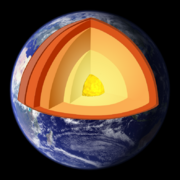Difference between revisions of "Material"
| Line 9: | Line 9: | ||
{{frame1|Sections}} | {{frame1|Sections}} | ||
{{frame1|Twenty most abundant elements in Earth's crust}} | {{frame1|Twenty most abundant elements in Earth's crust}} | ||
| + | {{frame1|See also}} | ||
</div> | </div> | ||
| Line 16: | Line 17: | ||
{{frame1|Constituent elements of air}} | {{frame1|Constituent elements of air}} | ||
{{frame1|Less material}} | {{frame1|Less material}} | ||
| − | |||
</div> | </div> | ||
Revision as of 19:08, 30 June 2007
|
Air, water and the twenty most abundant elements in the Earth's crust provide almost all the material needed to create the multitude of machines and goods that mankind requires: food, drugs, houses, vehicles, robots, industrial machinery, computers, consumer goods and so on.
Extracting these plentiful elements (and their compounds) to create useful material essentially involves energy (which is also plentiful) and the right processing methods. From a technical point of view there is practically no limit to the volume of material we could extract and make use of, if we so wished, even while minimally disrupting complex and fragile ecosystems. The reserves of raw materials needed to sustain civilisation are simply not going to run out, because the entire Earth's crust The point is that any existing material scarcity actually has little to do with the reserves at our disposal.
Approx figures for the 20 most abundant elements in Earth's crust:
Approximate composition of seawater by mass:
Approximate composition of dry atmosphere by volume:
Recycling is likely to become far more widespread than it is now, reducing the burden of having to process new material to create goods and infrastructure. Product design and engineering is likely to become increasingly sympathetic to the recycling process which is becoming more automated as time goes on. It is possible that recycling could become so efficient, that a tiny percentage of industrial feedstock actually come fresh from the ground. After decades of using landfill sites, these may also become a viable source of already concentrated useful material such as plastics, metals and methane. Another possibility is that carbon could be harvested directly from the carbon dioxide in the atmosphere. Carbon and carbon-based compounds can have many useful properties such as very high strength-to-weight ratios and very low electrical resistance. Reducing carbon dioxide in the atmosphere also helps mitigate the effects of global warming, however staggeringly vast quantities would have to be removed to have any significant effect on climate change. However trees do exactly this, extracting billions of tonnes of carbon from the atmosphere to create wood. Of course it would be far more sensible to collect the carbon at the source of emissions than waiting until it has dissipated into the atmosphere before collection. | ||||||||||||||||||||||||||||||||||||||||||||||||||||||||||||||||||||||||||||||
 [print version]
[print version]  [update]
[update]  [site map]
[site map]Detailed tour:  previous page | next page
previous page | next page 





